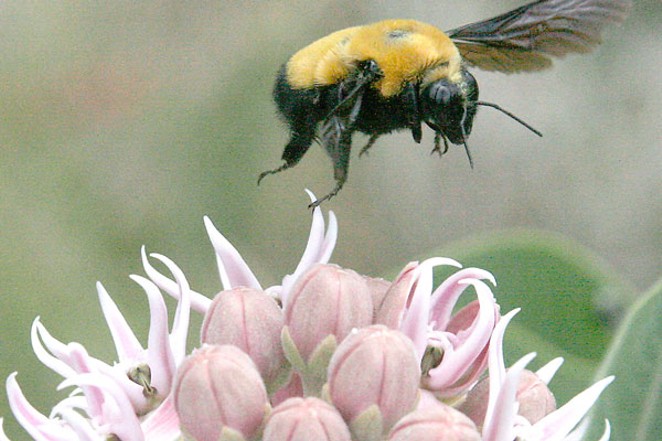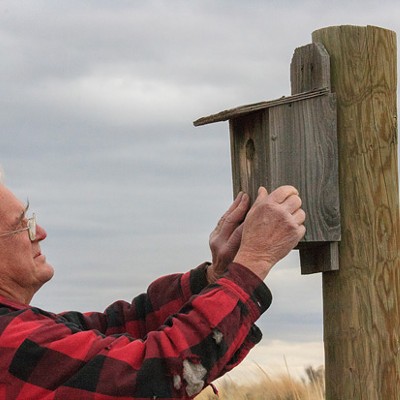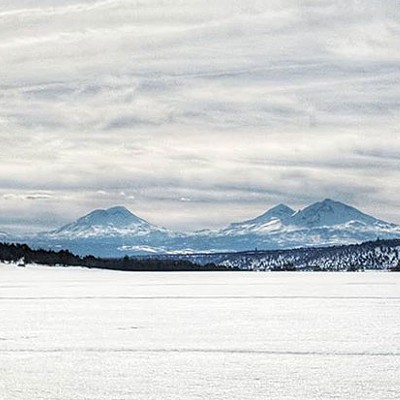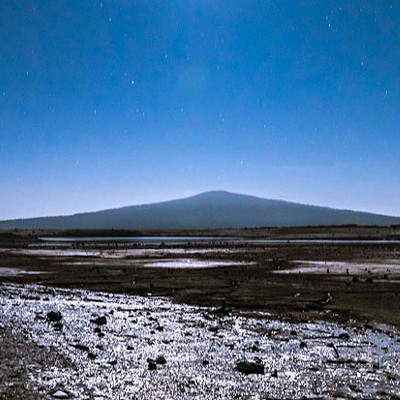I'm going to make a prophecy—though not quite as innocuous as Roger Tory Peterson's of 1936, when he predicted the cattle egret, Bubulcus ibis, would someday populate the U.S. His prophecy was that the cattle egret, which had arrived in South America early in the '30s—presumably after flying across the Atlantic Ocean in a storm, or by island-hopping from Africa—would colonize the U.S. by the '40s.
Five short years later, in 1941, they arrived in Florida and began to spread across the US. I was fortunate to observe the first known one reported in Oregon in 1965, on Sauvie Island near Portland.
Now here's my prediction, which I hope scares the daylight out of you, as it does me: In about 20 years (or fewer) there's going to be a discovery of chemicals seeping into our groundwater that will only be the tip of the iceberg regarding the elements threatening human safety and health.
That is, if the vast amounts of methane gas, now stored in the deep Pacific Ocean trenches—held down there by the cold oceanic waters—aren't released into our atmosphere when ocean water reaches a temperature too warm to hold it down in the deep ocean layers, and it drifts out of the Pacific and sweeps inland to North America first.
When entomologists tell us that wild bees and other insect pollinators—vital to our welfare—are vanishing, that's scary stuff. If something destroys our pollinating insects, such as bees, flies and beetles, just to name a few, and they can no longer function in the Earth's ecosystems, the impact on the human food chain will be devastating.
Multiply that by millions and you have a sample of what may be in our soils, slowly approaching (if not in) our water tables, or worse yet, perhaps about to be moved violently by our next seismic event.
tweet this
According to a recent news story from Europe, for the last 27 years, researchers and amateur entomologists have set traps on nature reserves across Germany, collecting data on insect populations, searching for clues on why insects have been declining. The study concluded that multiple factors have contributed to the population decline, including climate change, pesticides and agricultural practices.
Pesticides and agricultural practices are insidious elements putting stuff in our soils and water for many, many years, resulting in years and years of activities that we have no way of measuring. The spraying of wheat fields and other agricultural products has been going on for at least 50 years. Do we actually know or really understand what all that stuff is doing as it slowly seeps into our soils, pushed further and further into the substrate by gravity, weather and time?
Back in the '70s the chemical companies of the Willamette Valley got a scheme going that resulted in thousands of drums of unknown chemicals being dumped on the surface of Alkali Lake in Lake County, just east of us. When the Department of Environmental Quality got wind of it, they decided to bury it—all of it‚ millions of gallons of liquids that have no name... except, "Poison."
It's now "out of sight, out of mind." But someday we'll hear from that stuff, and it's not going to be a pretty message. Multiply that by millions and you have a sample of what may be in our soils, slowly approaching (if not in) our water tables, or worse yet, perhaps about to be moved violently by our next seismic event.
According to a great many citizen scientists and professional entomologists throughout the U.S., for the first time in the history of the continental U.S., a native bumblebee—once a common sight across much of the nation—has been declared an endangered species by the U.S. Fish and Wildlife Service. The USFWS declared the rusty patched bumblebee—native to the eastern and midwestern U.S. as well as Ontario, Canada—an endangered species, effective February 2017.
They wouldn't have done it if it hadn't been for those thousands of caring people, citizen scientists and professional scientists who are watching what's going in our nation's insect populations. The food web of bumblebees is so interrelated with so much of the biology of Mother Earth it will be an immeasurable disaster should they vanish.
This is going to sound like the foolishness of a 90-year-old naturalist, but good people, I did not realize the importance of taking responsibility for what harm we (I) do to the land until I met up with the research and philosophy of Aldo Leopold.
Leopold was an American philosopher, scientist, ecologist, forester, conservationist, author and environmentalist. In his book, "A Sand County Almanac," he stated, "A thing is right when it tends to preserve the integrity, stability and beauty of the biotic community. It is wrong when it tends otherwise." That's irrefutable.
The data from studies in Europe regarding the disappearance of insects in that part of the world, and looking at what's taking place here with our bumblebees, honeybees and other pollinators, leave no question that Earth's ecosystems are in deep trouble.
The USFWS said the rusty patched bumblebee was "abundant" across 28 states from Connecticut to South Dakota and up into Canada just 20 years ago, but is now, "balancing precariously on the brink of extinction." "Extinction" is a bad word, dear people.



























